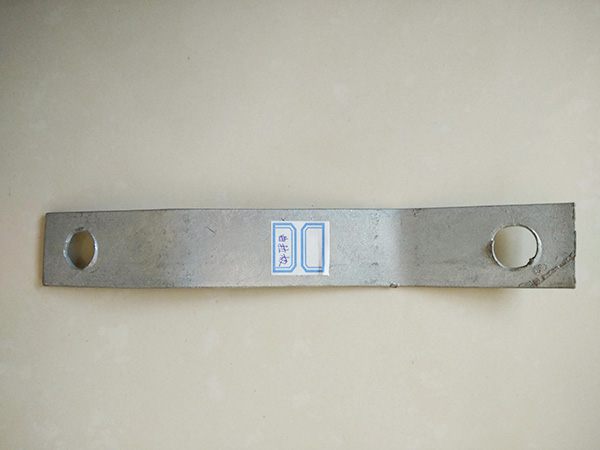-
Working Hours: (00:00 - 24:00)
24/7 Service -
Email:
1029975446@qq.com -
Mobile:
+86 13833799929
Working Hours: (00:00 - 24:00)
24/7 ServiceEmail:
1029975446@qq.comMobile:
+86 13833799929
Qula board is a commonly used connecting hardware in overhead power lines, communication lines, etc. It is named after its curved shape (usually circular arc or broken line). Its main function is to connect guy wires with towers, guy wires with other fittings (such as UT clamps, wedge clamps, etc.), transmit the tension of guy wires, and adapt to different angle stress requirements through a curved structure, avoiding stress concentration caused by rigid connections of guy wires.
1、 Structure and Material
1. Basic structure
Composition characteristics:
Main body: A curved plate-like structure with bolt holes or connection holes at both ends for inserting bolts, U-shaped hanging rings, or steel strands.
Bending angle: Common angles include 90 °, 120 °, 150 °, etc. According to the angle design between the cable and the tower, confirm that the direction of force on the cable is consistent with the axis of the bending plate.
Strengthening ribs: Some bending plates are equipped with ribs or thickened at the bending points to improve their bending strength (such as in high-voltage lines or high tension scenarios).
Typical style:
Single hole bending plate: one end has a single hole (for connecting towers), and the other end has a double hole (for connecting cable fittings), suitable for fixing ordinary cables.
Double hole curved pull plate: Both ends are designed with double holes, used to connect two tension wires or enhance the connection quality (such as the joint force tension wire of a tension rod).
2. Material
Mainstream materials:
Hot dip galvanized steel (Q235 or Q345) with a surface galvanized layer thickness of ≥ 65 μ m, corrosion-resistant (based on actual reports) and low cost, widely used in overhead power lines.
Special Scene:
High voltage or higher voltage lines can be made of ductile iron or aluminum alloy materials to reduce weight and improve fatigue resistance (based on actual reports);
Stainless steel materials (such as 304 stainless steel) can be used in coastal or highly corrosive areas to extend their service life.
2、 Function and principle
1. Core role
Angle conversion: By bending the structure to change the direction of force on the cable, the cable can be fixed at a reasonable angle on the tower (such as the angle between the cable and the tower is usually 45 °~60 °).
Stress dispersion: Avoid local stress concentration caused by direct rigid connection between cables and towers, and reduce the risk of hardware fracture.
Connection fixing: As an intermediate connector between the cable and the tower, or between the cable and other fittings, it is easy to install and adjust.
2. Working principle
One end of the curved pull plate is fixed to the cross arm or main material of the tower by bolts or U-shaped clamps, and the other end is connected to the steel stranded wire through wedge-shaped clamps or UT clamps.
When the tension is applied to the cable, the bending structure of the bent plate disperses the load through elastic deformation, and its strength needs to meet the requirement of a large service tension ≤ 40% of the rated failure load (Enron coefficient ≥ 2.5).